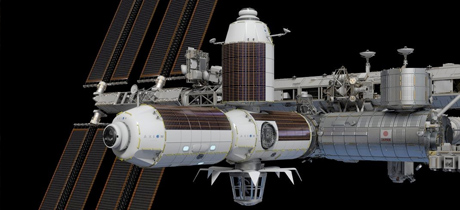In Today’s Deep Space Extra… The U.S. House Space Subcommittee’s proposed 2020 NASA Authorization bill stirs new debate over the future of human space exploration. NASA selects Houston based Axiom for the addition of a commercial module to the U.S. segment of the International Space Station (ISS).
Human Space Exploration
Bridenstine politely responds to House Committee’s 2020 NASA Authorization bill
Coalition Member in the News – Boeing
Spacepolicyonline.com (1/27): NASA Administrator Jim Bridenstine responded Monday to a NASA 2020 Authorization measure unveiled late Friday that would re direct the space agency’s human exploration focus from the Moon to Mars, starting with an orbital mission to the Red Planet in 2033.
Bridenstine concerned about aspects of House NASA Authorization bill
Coalition for Deep Space Exploration in the News
SpaceNews.com (1/27): NASA Administrator Jim Bridenstine on Monday raised concerns over a U.S. authorization measure introduced late Friday that would significantly redirect NASA’s human deep space exploration focus from the Moon to Mars. Bridenstine urged lawmakers to embrace the significant role that U.S. commercial space could play in accelerating the return of human explorers to the lunar surface from 2028 to 2024.
Industry reactions to new NASA Authorization bill vary widely
Coalition Members in the News – Aerojet Rocketdyne, Axiom Space, Boeing, Jacobs, Lockheed Martin, Northrop Grumman
Spacepolicyonline.com (1/27): The Commercial Spaceflight Federation (CSF), Coalition for Deep Space Exploration (CDSE) and the Aerospace Industries Association (AIA) offered responses Monday to a proposed NASA authorization measure unveiled by the U.S. House Science, Space and Technology Committee’s Space Subcommittee last Friday. The measure calls on NASA to make a measured 2028 rather than 2024 return to the surface of the Moon with human explorers and press towards reaching Mars orbit with astronauts by 2033. The proposed role of commercial partners in the development of human lunar landers would be transitioned back to NASA as well. A House markup on the proposed 2020 NASA Authorization bill is planned for Wednesday.
NASA clears Axiom Space to put commercial habitat on Space Station, with Boeing’s help
Coalition Members in the News – Axiom Space, Boeing, Maxar Technologies, NanoRacks, United Launch Alliance
GeekWire.com (1/27): As part of a strategy to transition supervision of the nation’s low Earth orbit human activities to the private sector, NASA on Monday announced the selection of Houston-based Axiom to place a commercial habitation module at the International Space Station’s (ISS) Harmony module as soon as 2024. The module will include work space as well as an Earth observatory to suit the needs of a range of clients. Axiom is partnered in the venture with Boeing, Thales Alenia Space Italy, Intuitive Machines and Maxar Technologies. Axiom was cofounded by space entrepreneur Kam Ghaffarian and Michael Suffredini, who served as NASA’s Space Station program manager from 2005 to 2015. The company is now owned by KBR, an engineering conglomerate.
Space Science
New mission will take 1st peek at sun’s poles
Coalition Member in the News – United Launch Alliance
NASA Goddard Space Flight Center (1/28): The European Space Agency (ESA) is partnered with NASA for the Solar Observer mission scheduled to launch from Cape Canaveral Air Station, Florida, atop a United Launch Alliance (ULA) Atlas V rocket Friday at 11:15 p.m., EST. During a multiyear mission, the spacecraft will orbit the sun from a vantage point that offers a suite of 10 instruments unprecedented views of the sun’s poles. Working in in conjunction with NASA’s Parker Solar Probe, which was launched in 2018, Solar Orbiter is to help explain physical properties that enable the sun’s magnetic field and charged particles to reach across the solar system.
China plans 39 million-mile race to Mars to catch up with NASA
Bloomberg.com (1/18): China’s push to lead in space starts with a mission to reach the surface of Mars. During late July and early August, the Earth and Mars are in closest proximity for launches. Like NASA, the European Space Agency (ESA) and its Russian space agency partner, and the United Arab Emirates (UAE), China plans to take advantage of the opportunity to launch a lander mission.
These twin rovers might explore the Moon together one day
Space.com (1/27): The European Space Agency’s (ESA) has contracted with France’s Comex on a project to develop Trailer, a two year initiative to assess how well two robots could work together on a future lunar mission. The machines will be controlled from Earth or perhaps a lunar orbiting, human tended spacecraft like NASA’s planned Gateway. German and Austrian enterprises are involved in Trailer as well.
Other News
Assessing China’s commercial space industry
The Space Review (1/27): China is aware of the fundamental potential for commercial space in the future. An assessment of the future market potential from Space Angels suggests that though the U.S. leads in private sector investment, China may be eager to surge.

